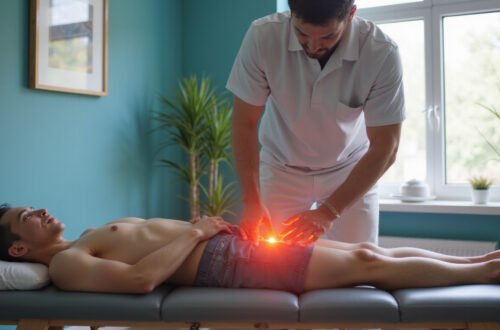When recovering from an injury, finding the right approach can make all the difference in regaining strength and mobility swiftly. Physical therapy plays a crucial role in this process, offering evidence-based techniques designed to accelerate injury recovery effectively. By utilizing targeted exercises, manual therapy, and advanced modalities, physical therapy not only speeds healing but also reduces pain and prevents future injuries. In this article, we’ll explore the most effective physical therapy techniques that help patients get back on their feet faster and stronger.
Understanding the Role of Physical Therapy in Injury Recovery
Physical therapy focuses on restoring function and reducing pain through non-invasive methods tailored to individual injuries. Whether recovering from a muscle strain, ligament tear, or surgery, physical therapy professionals design customized programs that prioritize safe, gradual progress. These programs typically include a combination of active movements, hands-on interventions, and education on body mechanics.
Because every injury is unique, physical therapists assess range of motion, strength, and flexibility to create precise goals. This personalized approach helps minimize downtime and facilitates a more sustainable recovery trajectory.
Key Physical Therapy Techniques That Promote Faster Healing
Below are some of the most effective physical therapy techniques widely used to accelerate injury recovery:
1. Therapeutic Exercises
Therapeutic exercises form the backbone of any physical therapy regimen. These activities strengthen muscles surrounding the injured area, improve flexibility, and restore joint function. Some common types of therapeutic exercises include:
- Range of Motion Exercises: Gentle movements to maintain or improve joint mobility.
- Strengthening Exercises: Resistance training focusing on affected muscles to rebuild strength.
- Balance and Coordination Drills: Improve proprioception and reduce the risk of re-injury.
Regular performance of these exercises under professional supervision ensures a gradual return to normal activities without overloading healing tissues.
2. Manual Therapy
Manual therapy involves hands-on treatment methods applied by a physical therapist to relieve pain and improve tissue flexibility. Techniques such as joint mobilizations, soft tissue massage, and myofascial release can effectively reduce stiffness and enhance circulation. For example, joint mobilization helps restore normal joint mechanics while soft tissue techniques target tight or scarred muscles.
3. Modalities and Technology-Enhanced Techniques
Modern physical therapy incorporates various devices and technologies that support healing and pain relief, including:
- Ultrasound Therapy: Uses sound waves to promote tissue healing and reduce inflammation.
- Electrical Stimulation (e-stim): Electrical currents stimulate nerves and muscles, helping decrease pain and improve muscle activation.
- Laser Therapy: Low-level laser boosts cell repair and circulation.
These modalities complement exercise therapy by reducing discomfort, allowing patients to engage more fully in active rehabilitation.

4. Functional Training and Activity-Specific Recovery
For athletes or individuals with specific job-related tasks, physical therapy includes functional training that mimics real-world movements. This targeted approach ensures the injured area can tolerate daily activities safely and perform at previous levels. Functional training may involve gait training, sport-specific drills, or ergonomic education.
Comprehensive Injury Recovery Plan: Steps to Follow
A successful recovery plan through physical therapy includes multiple phases designed to optimize healing:
-
Assessment and Diagnosis
Early evaluation by a physical therapist pinpoints injury severity and functional limitations. -
Pain and Inflammation Control
Initial therapy focuses on reducing swelling and managing pain through modalities and gentle movement. -
Restoration of Movement
Gradual introduction of range-of-motion and stretching exercises to prevent stiffness. -
Strength and Endurance Building
Progressive resistance exercises rebuild muscle strength and endurance. -
Functional Integration
Incorporating functional tasks and sport-specific drills for full return to activity. -
Injury Prevention Training
Education on body mechanics, posture, and exercise techniques to avoid future injuries.
By following this structured approach, patients can experience not only quicker recovery times but improved long-term outcomes.
Benefits of Using Physical Therapy for Injury Recovery
Opting for physical therapy provides several key benefits:
-
Non-Surgical Treatment Option
Many injuries can be healed or greatly improved without invasive procedures. -
Personalized Care
Therapists customize programs based on each patient’s unique needs and recovery goals. -
Pain Management
Natural, drug-free methods reduce reliance on medication. -
Improved Mobility and Strength
Focused rehabilitation restores normal function more effectively. -
Prevention of Future Injuries
Education and training help patients maintain health over time.
According to the American Physical Therapy Association, engaging in tailored physical therapy greatly improves recovery speed and functional outcomes compared to non-intervention or generic exercise programs (source).
Frequently Asked Questions (FAQ) About Physical Therapy and Injury Recovery
Q1. How soon after an injury should I begin physical therapy?
Most injuries benefit from early physical therapy intervention, often within days to weeks after the injury, depending on severity. Early treatment helps control pain and prevents complications like stiffness.
Q2. What types of injuries can physical therapy effectively treat?
Physical therapy is effective for muscle strains, ligament sprains, fractures, post-surgical recovery, tendonitis, and even chronic conditions such as arthritis. It is adaptable to acute and chronic injuries.
Q3. Can physical therapy reduce the risk of re-injury?
Yes. A key component of physical therapy includes education on body mechanics, strengthening weak areas, and improving movement patterns, which collectively reduce the likelihood of future injuries.
Take Action: Accelerate Your Injury Recovery with Physical Therapy
If you are recovering from an injury and want to regain your mobility and strength quickly, consider consulting a licensed physical therapist. With effective physical therapy techniques, you can minimize pain, rebuild function, and return to the activities you love faster. Remember, a personalized recovery plan designed by a professional is your best ally on the road to full healing. Don’t let an injury keep you sidelined—take the first step toward recovery today by scheduling a physical therapy evaluation and experience the difference expert care can make!





